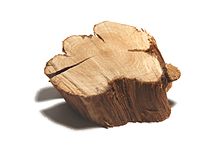Characteristics:
– Woody plants are usually trees, shrubs, or lianas.
– They are perennial plants with stems and roots reinforced with wood.
– The main stem, larger branches, and roots are covered by bark.
– Wood is a structural tissue allowing woody plants to grow year after year.
– Some woody plants are the largest and tallest terrestrial plants.
Growth:
– Stem growth primarily occurs from the terminal bud.
– Terminal buds have a stronger dominance on conifers.
– Lower leaves and branches are often lost as the plant grows.
– Roots expand each growing season and continue to grow during the dormant season.
– In cold climates, root growth continues above 2°C (36°F).
Tissue composition:
– Wood is primarily composed of xylem cells with cellulose and lignin cell walls.
– Xylem is a vascular tissue moving water and nutrients from roots to leaves.
– Most woody plants form new layers of woody tissue each year, increasing stem diameter.
– Stem diameter increases continuously throughout the growing season.
– In some monocotyledons, wood is formed in bundles scattered through the trunk.
Symbol:
– The symbol for a woody plant is based on Linnaeus’ “Species Plantarum.”
– The symbol is also the astronomical symbol for the planet Saturn.
See also:
– Arboriculture
– Dendrology
– Inosculation
– Vascular plant
References:
– Zimdahl, Robert L. (2018-01-01), Chapter 22 – Weed-Management Systems.
– Chase, Mark W. (2004). Monocot relationships: an overview.
– Stearn, William T. (1992) [1966]. Botanical Latin.
A woody plant is a plant that produces wood as its structural tissue and thus has a hard stem. In cold climates, woody plants further survive winter or dry season above ground, as opposed to herbaceous plants that die back to the ground until spring.

